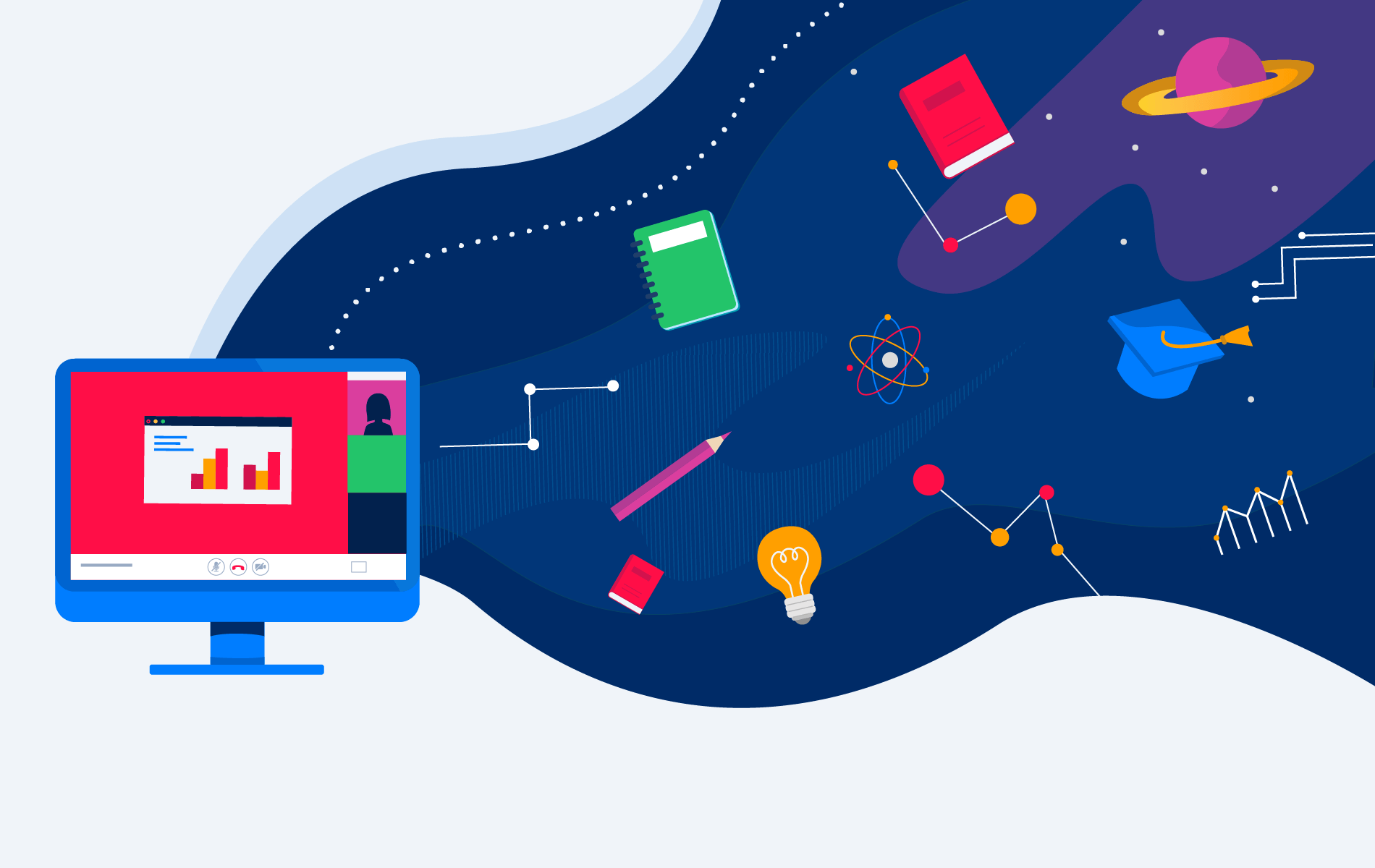Schools of all levels have had to pivot quickly and remain flexible as they have shifted from in-person to online learning, and back again to in-person or hybrid learning models. As the education industry continues to adopt technology at a rapid pace, faculty, students, and admin at higher educational institutions are more supported than ever.
According to Daxx, the e-learning industry is projected to surpass $243B in revenue by 2022, and EdTech solutions are growing in popularity among the representatives of higher education institutions, too. About 65% of faculty members approve the use of Open Educational Resources (OERs) in their teaching practice and about 63% have expressed their support towards competency-based education systems.
Read on to explore some examples of what lies ahead in remote learning for higher ed institutions.
Canvas
A learning management system by Instructure that empowers faculty with one place to import, build, and manage courses while also grading assignments and communicating with students. Students gain easy access to assignments, grades, and faculty support whenever they need it. Canvas also can integrate with over 400 EdTech partners.
GoBoard
A free online tool that combines video conferencing with an interactive canvas, designed to help students collaborate one-on-one with classmates, tutors, and teachers, on any topic. For the premium version, GoBoard Pro enables students to record sessions, add up to 5 people per room, and create pdfs of each board for study use.
Labster
Software that provides students with access to a virtual lab experience that is realistic enough to let them perform experiments and practice their skills in a fun and risk-free learning environment. Virtual labs are great for continuing science education even when classes are held online.
Loop
A platform that empowers students to give feedback, which increases engagement and performance retention at educational institutions. By using student’s real-time feedback, instructors can improve their practice and institutions can get a realistic pulse on the overall student experience to take appropriate action.
Lucid for Education
A suite of visual applications that combine the creative power of diagramming and design to help students understand their own thinking, actively participate in their learning, and gain crucial digital skills. Lucid has also recently created resources for distance learning, so instructors can take current lesson plans and make them apply to a virtual lesson.
READY Student Experience Platform
An all-in-one student experience platform that provides tailored information and content based on students’ personal interests and needs. READY uses a recommendation engine with built-in machine learning capability to provide information on events, services, courses, and orientation in an accessible calendar format.
Texthelp
Literacy, accessibility, and dyslexia software that helps students in the transition from high school to college, where there’s a greater focus on independent learning and self-study. For example, one of Texthelp’s many apps, EquatIO, makes STEM digital by helping students and their professors create equations, formulas, graphs, and more directly on their digital device.
ThingLink
An education technology platform that makes it easy for teachers and students to augment images, videos, and virtual tours in the remote environment. The platform is also ideal for saving notes with audio recording, collaborative editing, and creating course assignments.
Wakelet
A solution for educators that provides a simple way to capture, organize, and share multi-media resources with students, teachers, and learning communities. Save and present resources, build student portfolios, create newsletters to keep students engaged, and more.
There are dozens of helpful tools in higher education to enhance the experience for your students, faculty, and admin, and this list hardly scratches the surface. Capacity integrates with learning management systems and can work alongside any EdTech tool to enable your school to deliver higher quality services at a lower cost while improving student outcomes.


